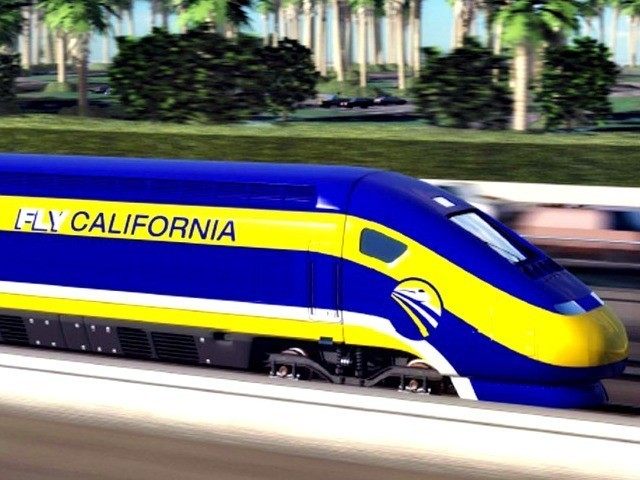Governor Jerry Brown’s pet project, the $68-billion bullet train, is finding it difficult to attract any outside investors willing to contribute the vital funds needed to complete the high-speed rail project.
The Los Angeles Times reports that the California High-Speed Rail Authority solicited rail, construction, and engineering firms globally in search of funds that would complement state and federal funding–to no avail. Rail authority staff and board members acknowledged that the pitch had been made, but no money was forthcoming, despite 36 responses that included a bevy of ideas and suggestions, including forming partnerships.
Rail authority Chief Executive Jeff Morales admitted, “They are not bringing their checkbook yet, but they are bringing their ideas, their interest, their commitment to work with us.”
Rail authority Chairman Dan Richard said the offers from the prospective investors included one of two ideas: either a revenue guarantee, which would be difficult to achieve because the companies would reject a state-backed operating revenue guarantee, or a history of financially successful operations. He allowed, “We still have a funding gap. We need that other piece that is new money.”
Michael Rossi, a retired Bank of America vice chairman and a rail board financial expert, told a board meeting that the responses elicited little, asserting, “There is no proposal, there is no commitment to do anything. … We need to be very, very careful.”
Some rail board members tried to spin the news positively; Tom Richards cheered the fact that so many responses had been forwarded, while Lisa Marie Alley, a spokeswoman for the authority, said the responses are “a clear signal from the private sector that they want to participate.”
The rail authority is determined to proceed, despite the fact that the initial cost of the 300-mile operating system from Burbank to Merced may run as high as $31 billion, and the state currently has only $15 million. Of that $15 million, $9 billion came from bond proceeds from voters in 2008, $3.2 billion came from federal grants, and the state expects to raise $2.5 billion from fees businesses pay for generating greenhouse gases.
On Thursday, the rail authority announced its new roughly $30 million contract with Kansas City, Missouri-based HNTB for building 22 miles of the line in the Central Valley.
In the Rail Authority’s funding plan, approved in November 2011, the document states:
For planning purposes, construction of the remainder of the IOS North or IOS South is estimated to be performed between 2015 and 2021 to reach completion of the initial Usable Segment. The anticipated timing of the identification of these additional funds for the initial Usable Segment would be not later than 2015 to enable procurement of construction‐related services at that time.
In June, Rep. Jeff Denham (R-Turlock), chairman of the House rail subcommittee, supported an amendment that would ban a 2012 agreement between California and the Obama administration allowing federal grant funds to be granted without immediate state matching money.
Elizabeth Alexis, co-founder of Californians Advocating Responsible Rail Development, commenting on the lack of outside funding, told the Times there will be “some serious soul searching on the next step.”

COMMENTS
Please let us know if you're having issues with commenting.